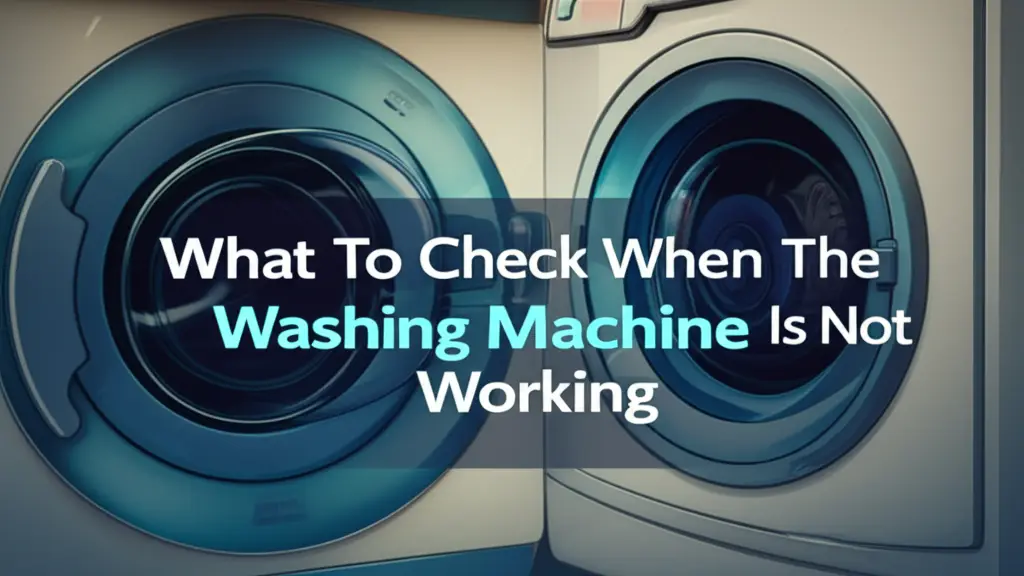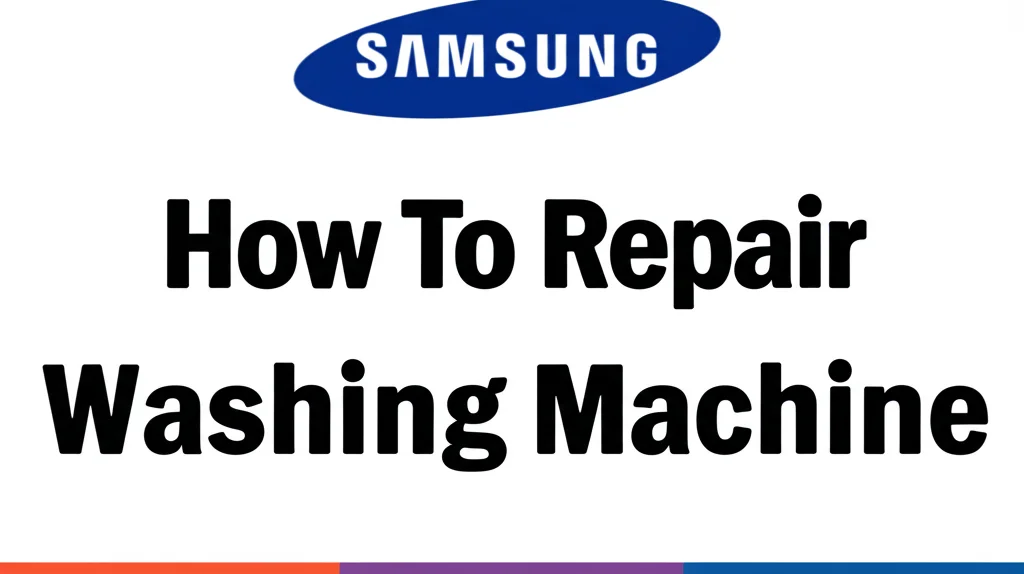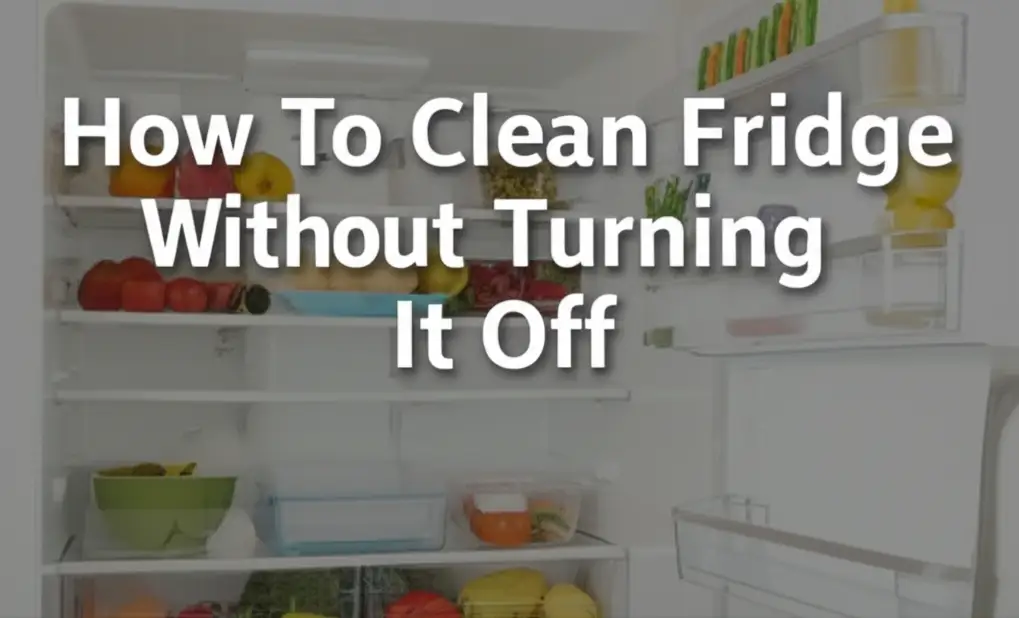· Home Appliances · 8 min read
What To Check When The Washing Machine Is Not Working

Is Your Washing Machine Giving You Trouble?
Let’s face it: a broken washing machine can throw your whole day off. No one wants to deal with piles of dirty laundry and the hassle of a malfunctioning appliance. If your washing machine is not working, don’t immediately call a repair technician. Often, the problem is something simple you can fix yourself. This article will walk you through a comprehensive checklist of things to check, helping you diagnose the issue and potentially save time and money. We’ll cover everything from basic power checks to common mechanical problems, giving you the confidence to tackle the issue head-on. We’ll also point you to resources for deeper cleaning if needed, like how to clean a washing machine with bleach.
Takeaway:
- Check the power supply and connections.
- Inspect the water inlet hoses for kinks or blockages.
- Ensure the drain hose isn’t clogged.
- Verify the lid switch is functioning correctly.
- Consider a reset or check the control panel for error codes.
Quick Answer: If your washing machine isn’t working, first verify it’s plugged in and the circuit breaker hasn’t tripped. Then, check the water supply hoses and drain hose for obstructions. Finally, ensure the lid switch is engaged and the control panel isn’t displaying an error code.
1. Power Supply & Basic Checks
Sometimes the simplest solutions are the most effective. Before diving into complex troubleshooting, make sure your washing machine is actually receiving power. It’s easy to overlook the basics, but a tripped breaker or loose plug can be the culprit. Start by confirming the machine is securely plugged into a working outlet. Then, check your circuit breaker box to see if the breaker for the laundry room has tripped. If it has, reset it and try running the machine again. If the breaker trips again immediately, there may be a more serious electrical issue requiring a professional.
- Check the outlet: Test the outlet with another appliance to confirm it’s working.
- Inspect the power cord: Look for any visible damage to the power cord.
- Reset the breaker: Fully switch the breaker off and then back on.
2. Water Supply Issues: Inlet Hoses
If the washing machine has power but isn’t filling with water, the problem likely lies with the water supply. The inlet hoses connect the machine to your hot and cold water lines. Ensure both hoses are securely connected to both the washing machine and the water faucets. Kinks or bends in the hoses can restrict water flow, so straighten them out. Also, check the water faucets themselves to make sure they are fully turned on. If you’re still having trouble, you might need to clean the inlet valve screens, which can become clogged with sediment over time. For a deeper clean, consider how to clean the water inlet valve on washing machine.
- Check for kinks: Straighten any bent or twisted hoses.
- Verify faucet is open: Ensure both hot and cold water faucets are fully turned on.
- Inspect inlet valve screens: Turn off the water supply and remove the screens for cleaning.
3. Drain Hose & Drainage Problems
A washing machine that won’t drain properly can also appear as if it’s not working. The drain hose carries wastewater away from the machine. Make sure the hose isn’t kinked, clogged, or improperly positioned. The end of the drain hose should be elevated above the drainpipe to prevent siphoning. If the drain hose is clogged, you can try disconnecting it and flushing it out with water. A clogged drain pump can also cause drainage issues, which may require professional attention. Regular cleaning can prevent these issues; you can learn more about how to clean washing machine pipes.
- Check for kinks: Ensure the drain hose is free of bends and obstructions.
- Verify hose height: The hose end should be higher than the drainpipe opening.
- Flush the hose: Disconnect and flush with water to remove any blockages.
4. The Lid Switch: A Common Culprit
Many washing machines have a lid switch that prevents the machine from operating when the lid is open. This is a safety feature. If the lid switch is faulty, the machine may not start even when the lid is closed. You can often test the lid switch with a multimeter, but this requires some electrical knowledge. If you’re not comfortable working with electricity, it’s best to call a repair technician. Sometimes, simply cleaning around the lid switch can resolve the issue.
- Inspect the switch: Look for any visible damage to the lid switch.
- Test the switch (with caution): Use a multimeter to check for continuity.
- Clean around the switch: Remove any debris that might be interfering with its operation.
5. Control Panel & Error Codes
Modern washing machines often have a control panel that displays error codes when a problem occurs. These codes can provide valuable clues about what’s wrong. Consult your washing machine’s owner’s manual to decipher the meaning of any error codes displayed. Sometimes, simply unplugging the machine for a few minutes and then plugging it back in can reset the control panel and clear the error. If the control panel itself is unresponsive, it may need to be replaced. You can also find helpful information on how to reset an LG washing machine.
- Check the owner’s manual: Look up the meaning of any error codes.
- Reset the machine: Unplug for 5-10 minutes, then plug back in.
- Inspect the control panel: Look for any signs of damage or malfunction.
6. Dealing with a Noisy Washing Machine
A loud or unusual noise during operation can indicate a mechanical problem. Common causes include worn bearings, a loose drive belt, or foreign objects caught in the drum. If you hear a grinding or squealing noise, stop using the machine immediately and investigate. Checking the drum for obstructions is a good first step. If you suspect a more serious mechanical issue, it’s best to call a qualified repair technician. Regular cleaning can also help prevent some noises; consider how to clean the washing machine drum.
- Check for obstructions: Inspect the drum for coins, buttons, or other small items.
- Listen for specific noises: Grinding, squealing, or banging sounds can indicate different problems.
- Inspect the drive belt (if accessible): Look for wear and tear or looseness.
7. Preventative Maintenance: Keeping Your Machine Running Smoothly
Preventative maintenance can significantly reduce the risk of future problems. Regularly clean the washing machine to remove detergent buildup, mold, and mildew. Run an empty cycle with hot water and a cup of white vinegar every month or so. Also, avoid overloading the machine, as this can strain the motor and other components. Finally, leave the door slightly ajar after each use to allow the drum to air out and prevent mold growth. You can also learn more about how to clean mold from washing machine.
Frequently Asked Questions (FAQ)
Q: Why won’t my washing machine start even when plugged in? A: Double-check the circuit breaker hasn’t tripped. Also, verify the lid switch is fully engaged. Sometimes, a power surge can cause issues, requiring a reset by unplugging the machine for 10-15 minutes.
Q: What does it mean when my washing machine displays an “LE” error code? A: “LE” typically indicates a problem with the water level sensor. This could be a faulty sensor or a blockage in the pressure hose.
Q: How often should I clean my washing machine? A: You should aim to clean your washing machine at least once a month to prevent buildup and maintain optimal performance.
Q: Can I use bleach to clean my washing machine? A: Yes, bleach can be effective for cleaning and disinfecting your washing machine, but use it sparingly and follow the manufacturer’s instructions. See how to clean washing machine with bleach for detailed guidance.
Q: My washing machine is making a loud banging noise. What could be the problem? A: A loud banging noise often indicates an unbalanced load. Try redistributing the clothes inside the drum. If the noise persists, it could be a sign of worn suspension rods or shock absorbers.
Conclusion
Troubleshooting a washing machine that isn’t working can seem daunting, but often the solution is surprisingly simple. By systematically checking the power supply, water connections, drain hose, lid switch, and control panel, you can often diagnose and fix the problem yourself. Remember to prioritize safety and consult your owner’s manual for specific instructions. Regular preventative maintenance will also help keep your machine running smoothly for years to come. If you’ve exhausted these troubleshooting steps and your washing machine still isn’t working, it’s time to call a qualified appliance repair technician. Don’t hesitate to seek professional help when needed – a properly functioning washing machine is essential for a smooth household routine!
- washing machine repair
- laundry appliance
- appliance troubleshooting




